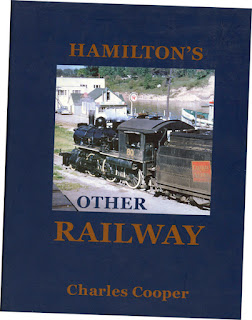---
It’s only taken about a dozen years, but I now have a decent
looking layout plan to illustrate what I’m trying to achieve in the
basement.
Because I’m no draftsman and never gained
proficiency at any track planning software, my pencil-on-graph-paper drawings
were, at best, conservative estimates. It
helps that I'm doing a quiet branch line rather than a densely tracked
mainline or urban operation, but with the benefit of hindsight I’m sure I could
have made better use of the space I have. No matter: I’m happy with how the
layout is shaping up.
 |
| (Jim's Port Dover branch of the CNR in 1:64. Click on the image to view a larger version.) |
The drawing you see here was done for me by my friend Joe
Kimber in New Jersey. Joe has been doing
track illustrations for The NASG Dispatch for some time now, including my own
articles on Canadian layouts. He offered
to draw the layout for me so I sent off photos along with my best attempt at a
scale drawing.
It’s great to have his
drawing now to lend visual context to any future writing I do about my Port
Dover Branch. Thanks, Joe!
What I’ve been building is a representation of the Canadian National Railways' branch
from Simcoe, Ontario, south through the Lynn Valley to Port Dover on Lake Erie. It all started with a colour photo given
to me by Dave Shaw. In 2001, it graced the cover of "Hamilton's Other Railway" - a book on the line by railway historian Charles Cooper.
 |
| (The photo that inspired Jim's layout.) |
The photo, of CNR Mogul number 80 switching the fish plant in Port Dover, took hold of my imagination. At about the same time, Simon Parent’s gorgeous S scale Mogul kit was seeing the light of day. The hook was set.
The three sections comprising the Port Dover harbour are actually Free-mo compatible, and travelled to many shows in the past, including those as far away as Milwaukee, WI and Springfield, MA. The next section very loosely represents the Culverhouse Cannery in upper Port Dover. It too is Free-mo, and remains on active show duty. These two modules were designed for easy removal.
The three sections comprising the Port Dover harbour are actually Free-mo compatible, and travelled to many shows in the past, including those as far away as Milwaukee, WI and Springfield, MA. The next section very loosely represents the Culverhouse Cannery in upper Port Dover. It too is Free-mo, and remains on active show duty. These two modules were designed for easy removal.
The rest of the layout is stay-at-home, but is also built in
sections, all resting loosely on L-girders. I estimate the entire layout could be removed from the basement in just
a few hours… an important consideration as I continue to age.
Simcoe is something of an accident. I had planned to freelance the layout on the
opposite side of the aisle. However the
track plan I sketched actually bore a vague resemblance to the south end of
Simcoe as it was in the 50s where the tracks diverged for Port Dover and Port
Rowan. So I decided to call the place
Simcoe after all, and while taking some liberties, have been introducing scenic
elements to make it look a little more like the real place once did.
In between: my still-to-be-built interpretation of Lynn
Valley. Trevor Marshall has made that
place pretty famous on his blog, so it will be interesting to see what I can
do.
One deviation already is the farm
bridge.
 |
| (The Lynn Valley area on Jim's layout. The farm bridge is at upper right. Click on the image to view a larger version.) |
There is no hillside, thus no need for such a bridge between the two places, but I wanted to use it because
it was a gift from my late friend Oliver Clubine. (There’s a picture of this bridge on the cover
of the June, 2003 Dispatch.) Prototypical
or not, the hillside cut will act as a useful visual break between Simcoe and
the Lynn Valley.
This is where my efforts lie right now as I continue to
rough out the scenery forms. The picture above shows my efforts to this point, along with some acrylic paint to hide the pink Styrofoam.
Till next time, Cheers!
